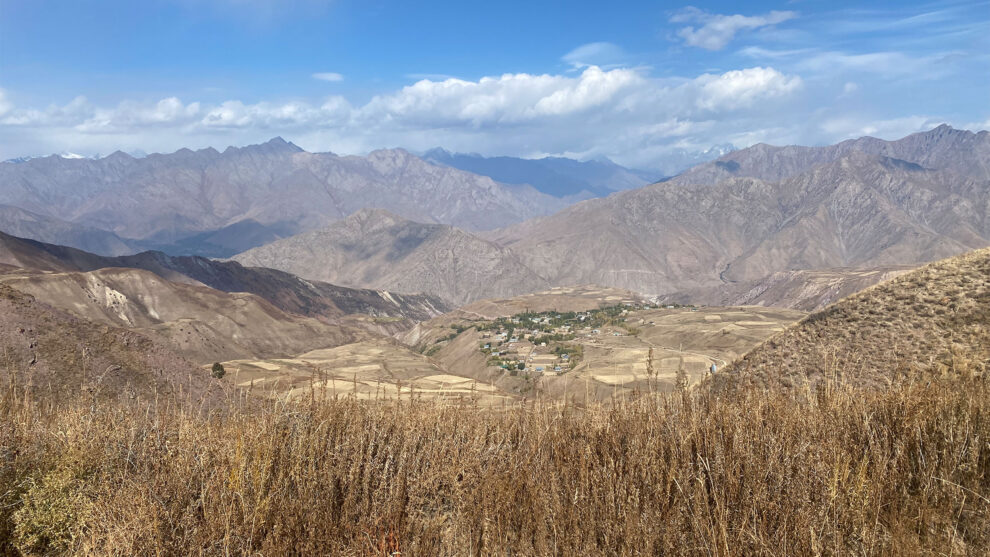On a sunny summer day two years ago, a massive chunk of ice broke off from a glacier on a mountain in the Central Asian country of Kyrgyzstan.
An avalanche quickly raced down the mountain toward a group of hikers below, which one man caught on film.
The hikers braced themselves for impact as the cascade of snow and ice poured down the mountain toward them. Miraculously, the group survived with only several people receiving minor injuries.
The event highlighted the challenges facing the world’s glaciers. This year, the UN declared that climate change reached record levels in 2023. And glaciers, which hold most of the Earth’s freshwater, are melting at an unprecedented rate.

But some glaciers located in mountainous parts of Central Asia aren’t melting and, in some cases, are actually growing. This cold, arid region, known as the Third Pole, is one of the only places in the world outside the interior of Antarctica where ice has so far been relatively unaffected by the climatic changes associated with rising temperatures.
Even during the summer it remains so cold in parts of Tajikistan that ice on a glacier’s surface can turn into a gaseous state instead of melting through a process known as sublimation. That can cause spectacular ice formations on a glacier’s surface that look like inverted icicles or ice pyramids, according to Evan Miles, a glaciologist at the Swiss Federal Research Institute who studies Tajikistan’s glaciers.
“I mean it’s a total pain to walk around on, but they look a little bit exotic even to a glaciologist,” Miles said.
Miles is the scientific coordinator for a team of Swiss and international scientists who have formed a research group known as the Pamir Project that hopes to discover what makes some of the region’s glaciers so unique. Each summer, they travel to isolated locations in Tajikistan’s mountains to study glaciers.
Scientists must spend days trekking up to altitudes sometimes as high as 15,000 feet just to visit their research sites, carrying in supplies and scientific equipment by donkey.
Miles said the remote locations the team visits in Tajikistan pose different challenges than research sites he has visited on Mount Everest where there are established trails and usually other people nearby.

“In Tajikistan, there’s nobody — there’s no helicopter that’s going to come rescue you if something goes wrong,” he said.
But understanding these glaciers is worth the risk because millions of people in Asia depend on them as a water source.
Scientists believe these glaciers aren’t melting because water is evaporating from vast, irrigated farmland in nearby Pakistan, China and Uzbekistan. An increase in atmospheric moisture drives changes in weather patterns, so more snow gets dumped on Tajikistan’s glaciers and helps their size remain stable.

These mountains are just one of many unsolved mysteries glaciologists are working on. It can be difficult for scientists to predict how much ice most glaciers will lose — and when — because there are still basic unanswered questions, like how much snowfall many mountains get.
“How much snow is actually falling seems like such a fundamental thing but, generally speaking, we have no idea really everywhere in the world,” Miles said.
To answer questions about the future of glaciers, researchers are looking to the past. They are studying how glaciers retreated at the end of the last Ice Age to shed light on what’s happening today.
But even though glaciers have retreated before throughout the Earth’s history — the same way most are melting now because of climate change — looking at the past has some limitations.
“The main difference with what’s happening today is how fast many glaciers are melting because we don’t have any record of such a sudden change,” said Guillaume Jouvet, a glaciologist and mathematician at the University of Lausanne in Switzerland.

Scientists who are part of the Pamir Project have also teamed up with historians and geographers who are searching for Soviet documents that contain earlier data about Tajikistan’s glaciers. Some members are also conducting oral histories with locals in Tajikistan’s mountains.
Sofia Gavrilova, a researcher at the Leibniz Institute for Regional Geography in Germany that’s helping with the initiative, met a Tajik schoolteacher as part of her oral history work who kept dated records of changes in the level of a local river.
“This is really very valuable, large-scale data that you cannot necessarily capture any other way,” Gavrilova said.
Satellites are now also gathering data about the Earth’s glaciers and scientists have begun using artificial intelligence to help process all the information.
The technology has become a useful asset that researchers believe can assist them in making scientific breakthroughs.
“AI can help us improve our projections about water resources and sea level rise [and that] can help local populations which are influenced by glaciers to adapt,” said Jordi Bolibar, a researcher at Grenoble Alpes University in France specializing in glaciology and computational geosciences.

Although some of Tajikistan’s glaciers remain stable for the moment, scientists predict that they, too, will eventually start to melt and get smaller.
Researchers believe it will prove very difficult to stop that process after it starts.
“Let’s say that we actually manage to withdraw carbon from the atmosphere effectively by 2050, there’s still actually going to be quite some time, probably 20 to 30 years, that the glaciers will continue shrinking and losing mass,” said Miles, of the Pamir Project.
He stressed that every effort we make to stop global warming — even by lowering the Earth’s temperature by just a tenth of a degree — can help save the world’s glaciers in the long run.
Source: The World









